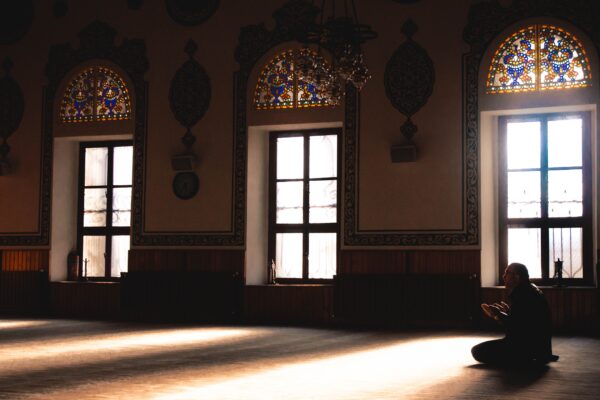The Gospels were written in pristine, high level Greek at least forty to seventy years after Jesus (a). If the disciples spoke Aramaic and they did not write down what they saw, who translated these events into Greek? Who oversaw the accuracy of this and the choosing of stories and sayings to include?
The Gospels were written in pristine, high level Greek at least forty to seventy years after Jesus (a). If the disciples spoke Aramaic and they did not write down what they saw, who translated these events into Greek? Who oversaw the accuracy of this and the choosing of stories and sayings to include?
In part 1 we reviewed the Qur’anic verses which tell the Muslims that they have duties of care toward the Christian communities. In part 2 we introduced how a community remembers past figures, with changes often occurring with new information and social demands. The story of Jesus (a) is no different; how he is remembered today is very different to how he was remembered in the first 50 years after his ‘death’.
In this part we will present what Muslims should know about the Gospels so they may engage in healthy learning when discussing them with Christian counterparts.
Both the Qur’an and narrations about the Prophet Muhammad (s) were written down immediately. It is well known that the Prophet (s) ordered scribes to write revelation and these have been carbon dated to his era. Despite the first two caliphs prohibiting the writing of narrations, companions like Jabir ibn Abdullah wrote narrations and these became the basis for what was taught and spread until collections of narrations became systematised in the second century.
Is this the same for the Prophet Jesus (a). Was his divine book scribed for posterity and did his companions – known as the Hawariyeen in Islam – write what what they saw?
In regards to the first, the Qur’an on numerous occasions mentions the revelations including the Injeel to Prophet Isa (a): “For it is He who has revealed the Torah and Bible” (3:3) and “Let then the followers of the Injeel judge in accordance with what God has revealed therein” (5:47), yet we have no record or copy or artefact of this revelation.
In regard to the second, and the focus of is this sermon, it is important to realise that the disciples did not write what they saw or memorised. They were lower-class, likely illiterates who spoke Aramaic. Not only did the twelve disciples not write down what they saw, neither did any of the eye witnesses of Jesus’s miracles or sayings or actions write anything down as well.
So what are the earliest written and surviving reports of Jesus (a)? We have the Book of Acts, the Letters of Paul, and The Gospels. There are however, many questions Muslims may raise to their Christian counterparts regarding the authenticity of the Gospels.
The Gospels were written in pristine, high level Greek at least forty to seventy years after Jesus (a). If the disciples spoke Aramaic and they did not write down what they saw, who translated these events into Greek? Who oversaw the accuracy of this and the choosing of stories and sayings to include?
Moreover, if the disciples were in Palestine, how did these Gospels reach the furthest parts of the Roman Empire without intermediaries?
The earliest Gospel is that of Mark, which is the shortest account, more theological in its narrative. Matthew and Luke appear to have another source; these are the sayings of Jesus. Unfortunately we do not know the authors of these four Gospels; that is to say the authors are unknown. It is akin to someone 70 years after the Prophet Muhammad (s) writing accounts and attributing them to his greatest companions like Abu Dharr, Salman al-Muhammadi or Jabir ibn Abdullah, but us not knowing who the authors are that are claiming to scribe their views.
Another issue is that in the Gospel of Mark, Jesus (a) attempts to stop his name being made famous as the Messiah; he actively prohibits the telling of his acts to others.
For example, when he (a) heals the sick he states (1:44) “And said to him, ‘See you say nothing to any man, but go on your way.’”
When he exorcises the demons (3:11-12) he tells them not to convey what they saw; the same when his disciples call him the Messiah and he tells them not to let it be known (8:29-30) and when they see him as divine light and he tells them not to reveal until after his death (9:1-9). If these stories we embargoed during his lifetime, how do we know the accuracy of what was conveyed after his his death as he was not there, nor did his companions write down what he did?
The Book of Acts was mentioned earlier. According to it, the disciples stayed in Jerusalem after Jesus’ death. As mentioned, The Gospel authors were in the Greek speaking parts of the Roman Empire. This raises the questions as to what are the chances that in these Roman churches were eye witnesses spreading, writing and re-telling their accounts of Jesus? How much was being recreated in the absence of eye-witness accounts?
For example, the Church of Corinth, West of Athens, was established by Paul. Paul knew several eye witnesses but never Jesus. Paul spent two weeks with Peter, a disciple and eye-witness and with James, the half-brother to Jesus, in Jerusalem. After these two weeks Paul converts many pagans in Corinth, presumably by retelling these stories of Jesus. He goes away to start another Church.
Apollos – a teacher – himself never met Jesus, comes to Corinth and continues the Ministry. This raises the question of as the city of Athens begins to learn of Jesus, who is teaching his mission and who is answering questions about the theology and sayings of Jesus (a)? If Peter saw Jesus, and Paul saw Peter for two weeks, once Paul conveys what he learned that person is now hearing it third hand – what happens when he conveys what he heard from Paul? – and so on and so forth.
Due to this lack of control on the stories of Jesus, many versions of the same events were in circulation; many were from non-canonical Gospels but were still famous amongst early Christians.
Today, when the birth story of Jesus is retold it is usually from the Gospel of Luke 2:1-7:
“So Joseph also went up from the town of Nazareth in Galilee to Judea, to Bethlehem the town of David, because he belonged to the house and line of David. 5 He went there to register with Mary, who was pledged to be married to him and was expecting a child. 6 While they were there, the time came for the baby to be born, 7 and she gave birth to her firstborn, a son. She wrapped him in cloths and placed him in a manger, because there was no guest room available for them.”
It is famous that there was no space at the inn and baby Jesus was placed in a manger. However, early Christians may not have known or believed in this version.
The Proto-Gospel of James (the half-brother of Jesus) writes the biography of Lady Mary (a) including the birth of Jesus very differently in that when she (a) goes into labor, Joseph hurries to find her a private place – not in an inn but a cave. As he goes to find a mid-wife time stands still and “then suddenly everything returned to its normal course.” When he returns with a midwife the cave is covered by a brilliant cloud which is replaced by a blinding light emanating from the cave.
The midwife runs to find another who, hearing this story, refuses to believe until she examines the hymen of Mary. For her doubt, her hand is suddenly set ablaze where she is told to pick up the baby Jesus, who is already able to walk and able to return her hand to normal.
This version of the birth story was far more famous in early Christendom. The Gospel of James has the same problem the other Gospels have in that its authors cannot be sourced. In fact this gospel was written anywhere between 140 to 250 AD, and was eventually rejected by Pope Innocent I in the 400’s and condemned altogether in the year 500.
The point being raised is that how do we know these stories of Jesus (a) were accurately conveying who he was and what he said if their origins cannot be properly verified?
Because of the multiple versions and interpretations by the 7th Century, the Qur’an sought to give the proper account of Jesus (a), including his birth:
“The Angel Gibrael (a) approaches Lady Mary (a) saying, ‘I am only the messenger of your Lord to give you [news of] a pure boy.’ She asks, ‘How can I have a boy while no man has touched me and I have not been unchaste?’
He said, ‘Thus [it will be]; your Lord says, ‘It is easy for Me, and We will make him a sign to the people and a mercy from Us. And it is a matter [already] decreed.”
So she conceived him, and she withdrew with him to a remote place. And the pains of childbirth drove her to the trunk of a palm tree. She said, ‘Oh, I wish I had died before this and was in oblivion, forgotten.’
But he called her from below her, ‘Do not grieve; your Lord has provided beneath you a stream. And shake toward you the trunk of the palm tree; it will drop upon you ripe, fresh dates'” (Qur’an 19:19-25).





